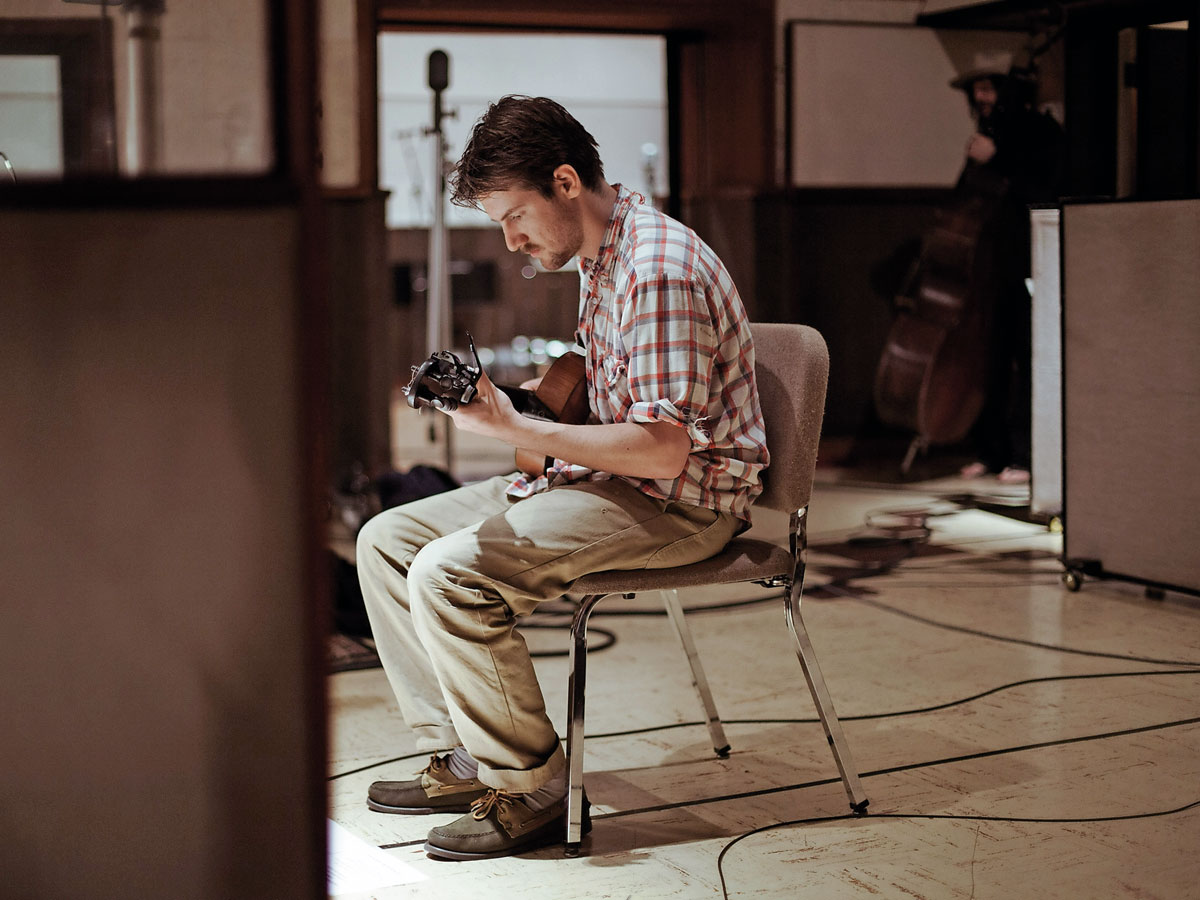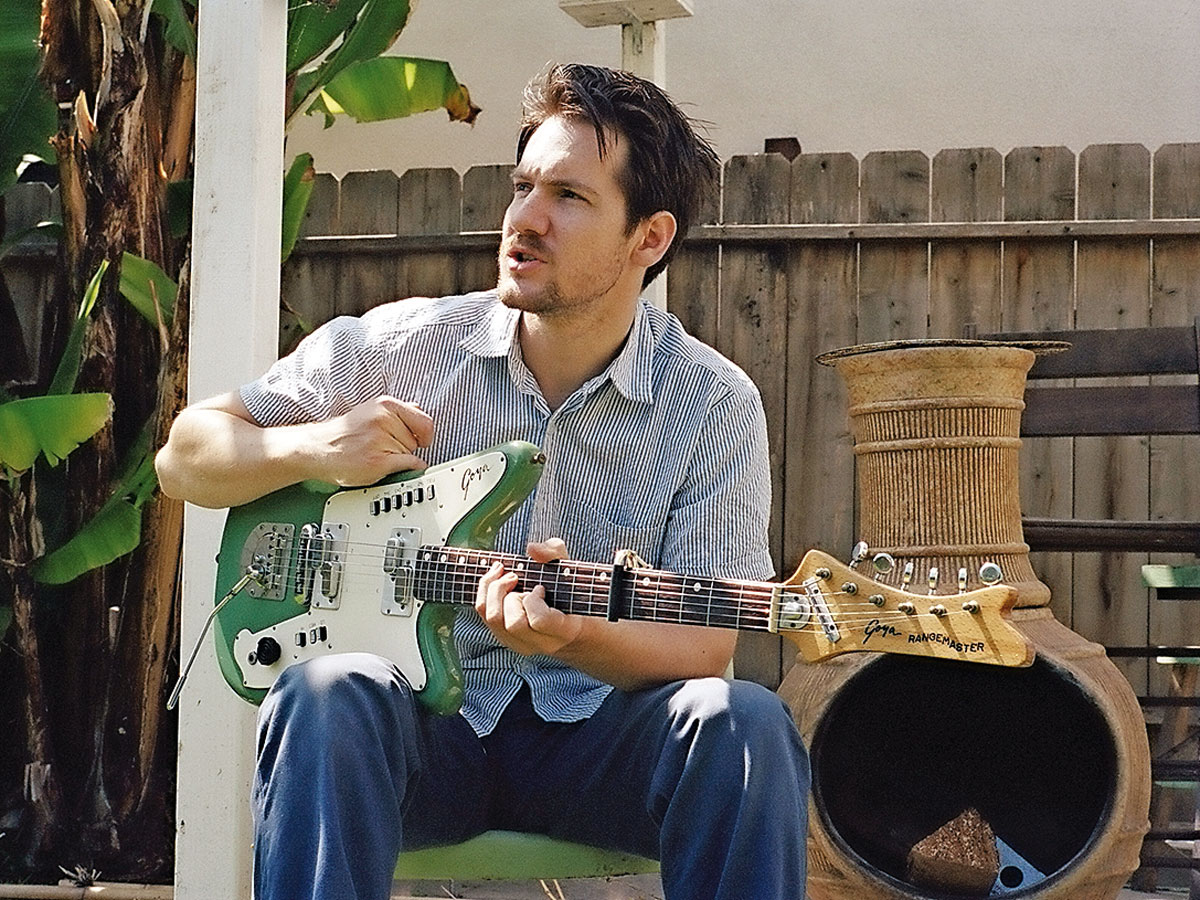Blake Mills on Heigh Ho and recording in his car
The session ace goes it alone

The Sessions
Blake Mills is the Californian session god who shared a stage with Clapton, now he turns solo star with a genre-splicing new album, Heigh Ho...
“It’s an interesting story: we recorded Heigh Ho in the ‘B’ room at Ocean Way, but most of the vocals were done in my car.
"There was a ’52 Tele that Jackson Browne pulled out to show me one night. I couldn’t put it down"
"I would drive out somewhere, really late at night, usually after two in the morning, when I’d been using my voice all day and it was finally warmed up. I’d drive to the beach, or to a park, and I had a microphone that I plugged into this simple little interface called an Apogee Duet.
"I’d record vocal takes into a laptop, then listen back to see if they were usable, sonically. The sound was actually quite good, because the car is like an isolation chamber. All the cloth seats soaked up any reflections, and the windshield was angled at such a drastic slope that there wasn’t slapback. And, y’know, everyone sings in the car!”
The Guitars
“My friend lent me this 1800s gut-string parlour that I used to write and record a few things. It’s got these wooden banjo tuners, so it’s a bitch to keep in tune.
"Then there was the ’52 Tele that Jackson Browne pulled out to show me one night. I couldn’t put it down, so he said, ‘Just hang onto it for a while’! There’s a lot of pedigree in that Telecaster. It’s been played by a bunch of people, and it’s covered in gunk, but I can’t bring myself to wipe it off, because there’s no telling who put it there.
"Almost all the slide stuff was played on my Coodercasters. I have two, and they’ve both got a neck pickup from a hollowbody Guyatone and a Valco in the bridge. But they’re very different: one sounds like a human voice and the other has a really wide range.”

The Tones
“The amplifier was a film projector that my friend Austen Hooks built. He takes film projectors from the 40s and modifies them so the audio section can be used as a guitar amp. I have a couple, and that’s kinda the centrepiece of my rig, running through cabinets that he also built.
"There's all this equipment used in a context that’s more unusual than just plugging a guitar into an amp"
"We mic’d the back of the cabs, too, and that helped retain some of the body. The projectors just sound different. It doesn’t colour the sound, like so many guitar amps do.
"I’d also put drums through the preamp section of a guitar amp, then take a line out straight to the board. So there was all this equipment being used in a context that’s a little more unusual than just plugging a guitar into an amp. Most of the effects were outboard - some tape delay and compression - I can’t recall any stompboxes.”
The Mix
“We spent a year mixing this record. I’d sit with Greg Koller and meddle with it until it felt like my memory of being there performing in the room. There’s such a beautiful sound in that ‘B’ room, that if you can capture it, you can transport the listener to that space. But it’s a difficult thing to capture. It’s sort of like realism in painting: there’s a lot of mystery in getting a record to sound real.
"In the studio, there was a main live room, and then a side room, where we put another cabinet - so we could turn it up and really get a wide stereo image of the guitar without turning up the drums and bass, too.
"To have an isolation room during live tracking that’s entirely dedicated to one guitar amplifier... that’s quite unusual.”

The Lessons
“Curable Disease was tough. I was trying to record that song just with guitar, and then sing it afterwards. Y’know, to just get the guitar performance, and then go and sing the vocal in my car. But I just couldn’t really play it with any kind of a pocket, and I really didn’t like the way I sounded singing it without playing guitar. It wasn’t a real dialogue.
"I just wanted to make a record that sounds like a record I want to hear."
"Finally, after trying to record that song for several days, I realised it was one where I really needed to be playing guitar and singing at the same time, just to get the pocket and the rhythm going. When it isn’t happening like that, it’s a very isolating feeling...”
The Verdict
“I wanted this record to sound... very much like it does! Yeah, I’m pleased with it. It’s something that I got to see all the way through, in the way I wanted to. My reputation as a guitar player is something I’m certainly proud of, but I think sometimes people expect something wild, fast, loud or aggressive. It’s not really the kind of musician I am.
"But I think once that wears off, and people are able to listen with open ears, there’s something else to take from it. I have no commercial aspirations. All the aspirations for it have been met. I just wanted to make a record that sounds like a record I want to hear.”

